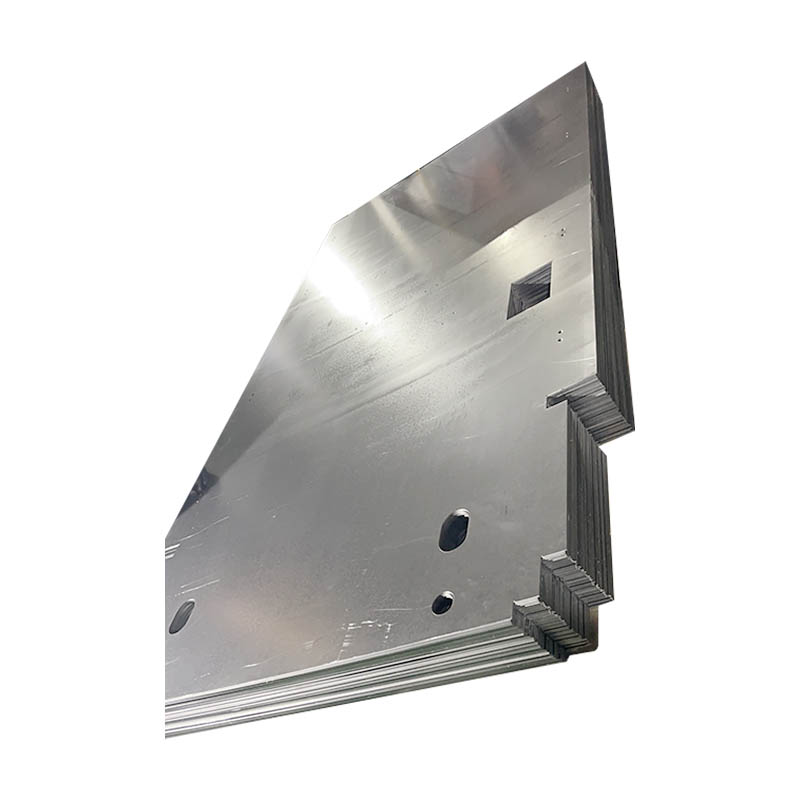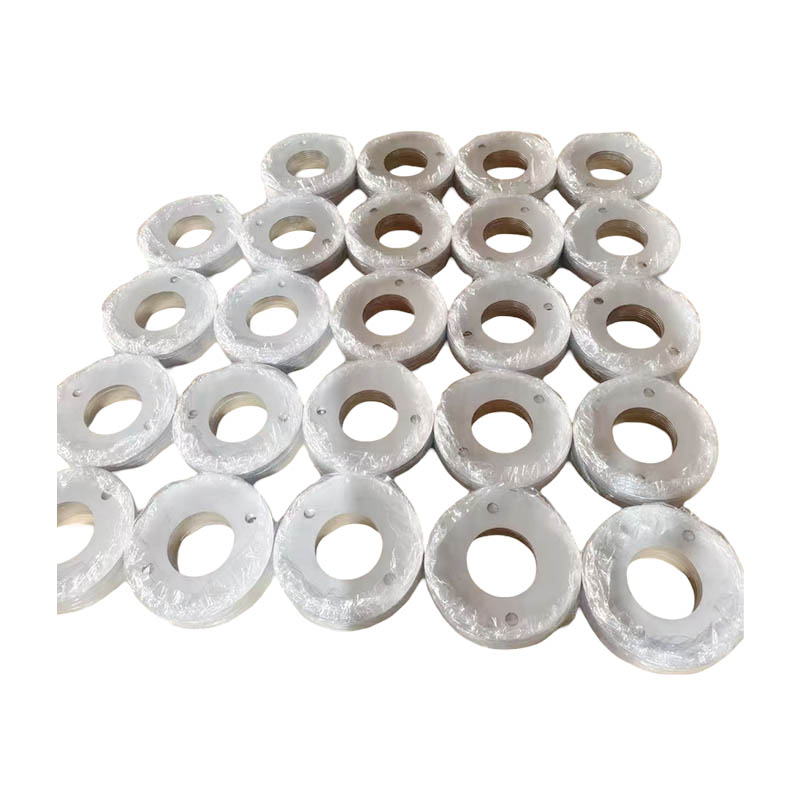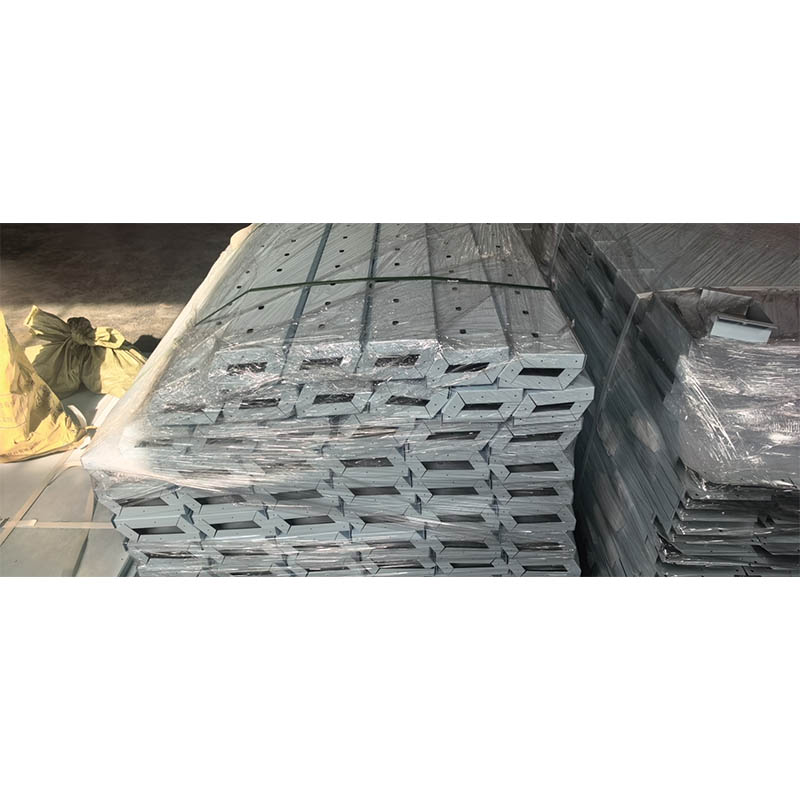How does carbon steel sheet metal achieve the exquisite beauty of modern manufacturing?
Release Time : 2025-11-18
In the grand landscape of modern manufacturing, carbon steel sheet metal, with its unique physical properties and processing adaptability, serves as a crucial medium connecting design concepts with physical products. From car bodies to appliance casings, from building components to precision chassis, carbon steel sheet metal is ubiquitous. Its core appeal lies not only in the material's inherent strength and economy but also in the boundless plasticity granted by the three major processes of cutting, bending, and welding.
Cutting is the first step in forming carbon steel sheet metal and a key factor determining precision and efficiency. Traditional shearing, while inexpensive, struggles with complex contours; laser cutting, with its high-energy-density beam, achieves micron-level precision on millimeter-thick sheets, while minimizing the heat-affected zone and effectively preventing material deformation. Plasma and waterjet cutting each have their strengths—the former is suitable for high-speed operations on thicker plates, while the latter can complete irregularly shaped cuts without generating thermal stress. The synergistic evolution of these technologies allows carbon steel sheet metal to precisely reproduce every curve and hole of the designer, laying a solid foundation for subsequent processes.
Bending processes endow flat sheet metal with three-dimensional forms. Using CNC bending machines, operators can precisely control the bending angle, radius, and springback compensation, transforming flat sheets into functional shells or supports. The excellent ductility of carbon steel sheet metal makes it less prone to cracking during cold bending, while proper die selection and blank holder force control effectively suppress wrinkling and springback. Furthermore, the introduction of multi-pass continuous bending and roll forming technologies makes mass production of complex cross-section profiles possible, greatly expanding the application boundaries of carbon steel sheet metal in high-end fields such as rail transportation and new energy equipment.
Welding, as a core means of connection and strengthening, integrates disparate components into a robust whole. For carbon steel sheet metal, the challenge in welding lies in heat input control—excessive heat can easily lead to burn-through, deformation, or structural degradation. Therefore, low-heat-input processes such as pulsed MIG welding, TIG welding, and even laser welding are widely used. These methods not only achieve aesthetically pleasing fish-scale weld seams but also ensure that the joint strength is close to that of the base material. Furthermore, spot welding and seam welding play an irreplaceable role in automobile manufacturing. Their high efficiency, energy saving, and high degree of automation perfectly meet the needs of modern flexible production lines. Post-weld stress relief and surface treatment further enhance the dimensional stability and corrosion resistance of components.
It is worth noting that the processing of carbon steel sheet metal is not carried out in isolation, but is deeply integrated with digital manufacturing. From CAD modeling to CAM programming, from intelligent nesting to robotic collaborative operations, the entire process achieves seamless integration driven by data. This integrated model not only shortens the delivery cycle but also significantly reduces material waste and human error, maximizing the value of carbon steel sheet metal within a lean manufacturing system.
Despite the emergence of new materials, carbon steel sheet metal, with its mature supply chain, excellent comprehensive performance, and highly adaptable processing ecosystem, remains a mainstay of basic industrial materials. It may not be as lightweight and dazzling as composite materials, nor as expensive and rare as special alloys, but it silently supports the framework of modern society with its unassuming nature. Driven by the dual trends of green and intelligent manufacturing, the processing technology of carbon steel sheet metal will continue to evolve—achieving higher efficiency, lower energy consumption, and enhanced intelligence. This is not merely an upgrade in process, but a contemporary interpretation of the word "precision craftsmanship."
It is the sharpness of cutting, the flexibility of bending, and the toughness of welding that together forge the unique position of carbon steel sheet metal in modern manufacturing. It is both a cornerstone of industrial civilization and a carrier of innovative spirit, constantly showcasing the exquisite beauty of the fusion of metal and wisdom in the hands of countless engineers and craftsmen.
Cutting is the first step in forming carbon steel sheet metal and a key factor determining precision and efficiency. Traditional shearing, while inexpensive, struggles with complex contours; laser cutting, with its high-energy-density beam, achieves micron-level precision on millimeter-thick sheets, while minimizing the heat-affected zone and effectively preventing material deformation. Plasma and waterjet cutting each have their strengths—the former is suitable for high-speed operations on thicker plates, while the latter can complete irregularly shaped cuts without generating thermal stress. The synergistic evolution of these technologies allows carbon steel sheet metal to precisely reproduce every curve and hole of the designer, laying a solid foundation for subsequent processes.
Bending processes endow flat sheet metal with three-dimensional forms. Using CNC bending machines, operators can precisely control the bending angle, radius, and springback compensation, transforming flat sheets into functional shells or supports. The excellent ductility of carbon steel sheet metal makes it less prone to cracking during cold bending, while proper die selection and blank holder force control effectively suppress wrinkling and springback. Furthermore, the introduction of multi-pass continuous bending and roll forming technologies makes mass production of complex cross-section profiles possible, greatly expanding the application boundaries of carbon steel sheet metal in high-end fields such as rail transportation and new energy equipment.
Welding, as a core means of connection and strengthening, integrates disparate components into a robust whole. For carbon steel sheet metal, the challenge in welding lies in heat input control—excessive heat can easily lead to burn-through, deformation, or structural degradation. Therefore, low-heat-input processes such as pulsed MIG welding, TIG welding, and even laser welding are widely used. These methods not only achieve aesthetically pleasing fish-scale weld seams but also ensure that the joint strength is close to that of the base material. Furthermore, spot welding and seam welding play an irreplaceable role in automobile manufacturing. Their high efficiency, energy saving, and high degree of automation perfectly meet the needs of modern flexible production lines. Post-weld stress relief and surface treatment further enhance the dimensional stability and corrosion resistance of components.
It is worth noting that the processing of carbon steel sheet metal is not carried out in isolation, but is deeply integrated with digital manufacturing. From CAD modeling to CAM programming, from intelligent nesting to robotic collaborative operations, the entire process achieves seamless integration driven by data. This integrated model not only shortens the delivery cycle but also significantly reduces material waste and human error, maximizing the value of carbon steel sheet metal within a lean manufacturing system.
Despite the emergence of new materials, carbon steel sheet metal, with its mature supply chain, excellent comprehensive performance, and highly adaptable processing ecosystem, remains a mainstay of basic industrial materials. It may not be as lightweight and dazzling as composite materials, nor as expensive and rare as special alloys, but it silently supports the framework of modern society with its unassuming nature. Driven by the dual trends of green and intelligent manufacturing, the processing technology of carbon steel sheet metal will continue to evolve—achieving higher efficiency, lower energy consumption, and enhanced intelligence. This is not merely an upgrade in process, but a contemporary interpretation of the word "precision craftsmanship."
It is the sharpness of cutting, the flexibility of bending, and the toughness of welding that together forge the unique position of carbon steel sheet metal in modern manufacturing. It is both a cornerstone of industrial civilization and a carrier of innovative spirit, constantly showcasing the exquisite beauty of the fusion of metal and wisdom in the hands of countless engineers and craftsmen.







